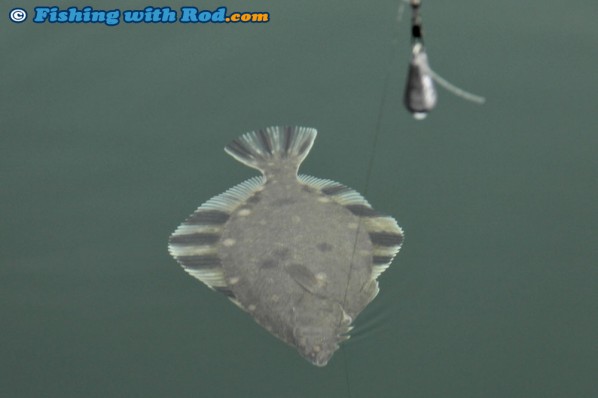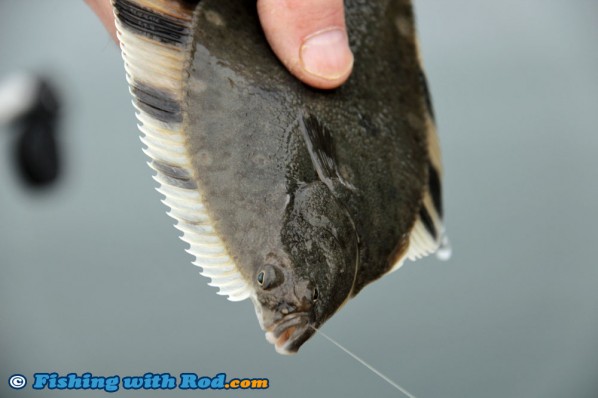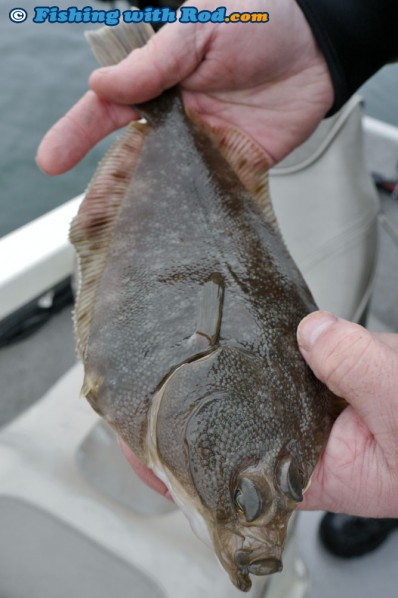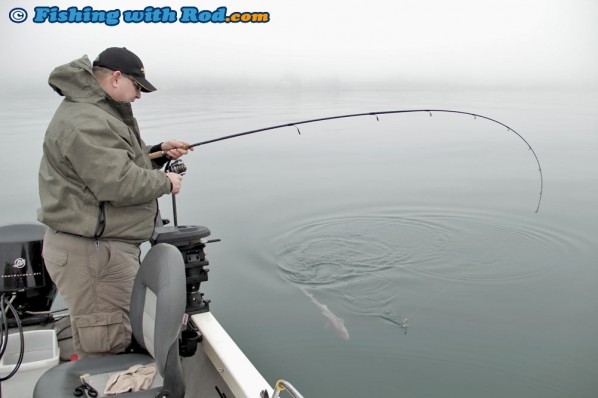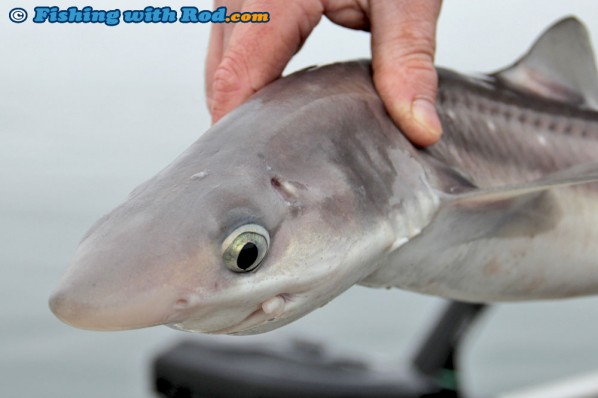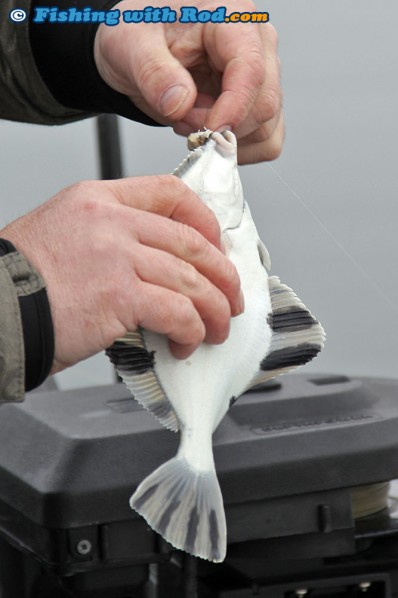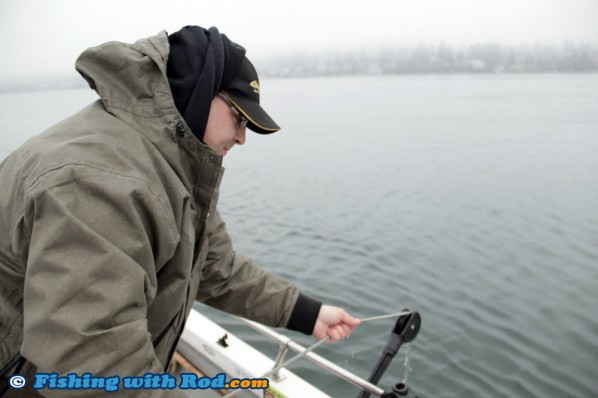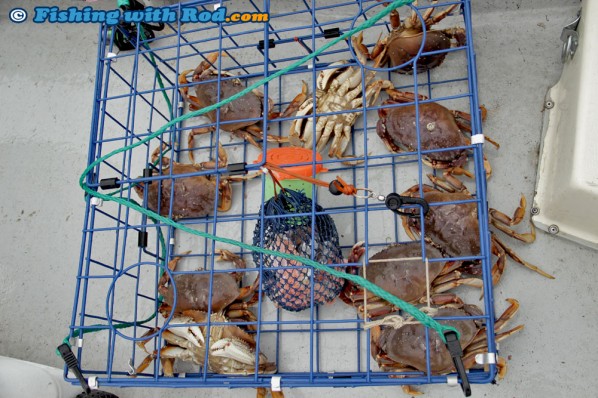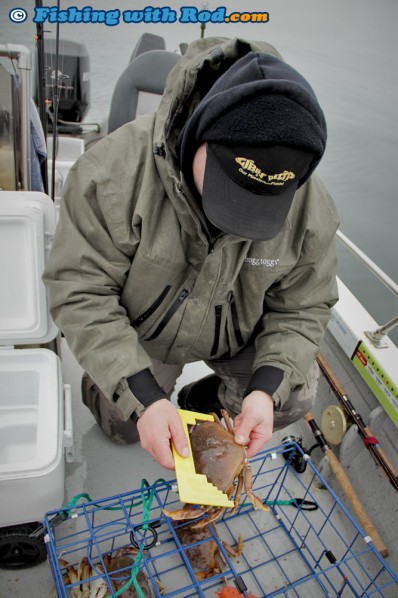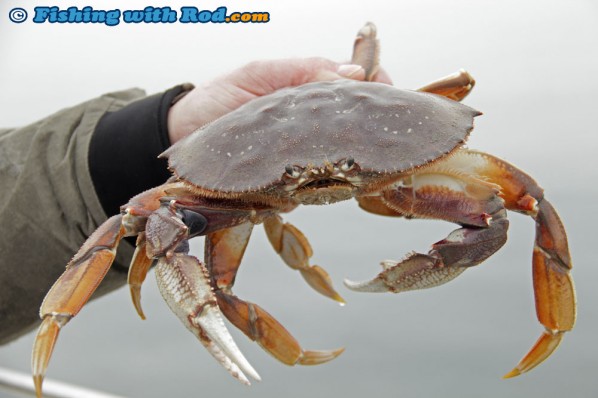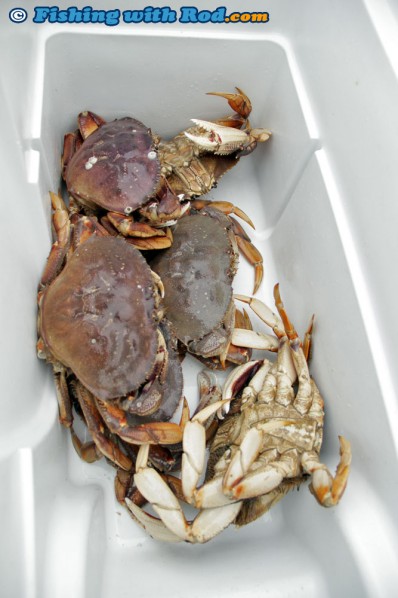Exploring Alternative Saltwater Fisheries in Vancouver
Published on Friday, January 31st, 2014
The river fishing has been awfully slow this winter. In contrast to the spectacular returns of steelhead in the past three seasons, most rivers in the Fraser Valley have been void of fish. Since I consider myself a fair weather fisherman, this certainly does not motivate me to get out and hunt for these elusive ironheads. At the same time, the cabin fever is brewing up nicely and I needed to find an alternative to cure it before spring arrives.
British Columbian anglers take pride of our Pacific salmon fishing, both in salt and freshwater. In Vancouver, salmon can be caught almost year round. In the winter months, chinook salmon are caught in the ocean just outside of Downtown Vancouver by trolling. The availability of productive salmon fishing means most people are unaware of what other species can be caught when the salmon are not biting. Alternative species are in fact widely available, and they make up an introductory fishery which anyone can find it enjoyable.
Before coming to Canada in the mid 90’s, I was able to enjoy a variety of fisheries available in Asia and Australia. Unlike BC’s recreational fisheries, most of these fisheries focus on catching smaller species with bait. Whiting, trevally, snapper, flounder are just some of these species which will never hesitate to peck on a baited hook. After focusing so much on catching salmonids in the past decade, I seem to have forgotten these bread and butter species.
Earlier this week, I was invited by Rick Clark to hop into his boat for a morning outing. Rick is an avid angler in Vancouver, who focuses on the local saltwater salmon fishery as well as the freshwater fisheries in the Fraser Valley such as sturgeon, salmon and steelhead. As a regular blogger on World Fishing Network, he also produces a variety of videos on YouTube to share his experience with other anglers. Before heading out, I pitched the idea of fishing for some of the underrated saltwater species instead of the usual salmon trolling to him. With an open mind, we spent the morning exploring what sit on the bottom of Burrard Inlet.
Like most other January days, Vancouver was blanketed by dense fog as we launched the boat from Ambleside Beach. The fog makes trolling for salmon almost impossible, but it was not a concern for us because the fish we wanted to catch are closer to shore. We had one minor setback at the start.
Because bottom fish are generally not very mobile, fishing from an anchored boat is required to keep the bait stationary. I made the mistake by assuming that Rick was aware of this. When I arrived at the boat launch, the first thing I asked was, “So you brought an anchor right?” The answer was of course, “No.”, which could have changed our plans but some improvisation saved the morning. Rick used his cannon balls for trolling to slow our drift down and the weak incoming tide also assisted.
We first dropped the crab traps at Rick’s favourite spots. For our crab bait, I marinated some old salmon fillets with Pautzke Bait’s Crab & Shrimp Fuel™ for 24 hours. The extra scent should draw in more crabs during the soak time. Winter crabbing is excellent due to the absence of commercial openings.
Once the traps were dropped, it was time to fish. The target species which I had on my mind were starry flounder, English sole, Pacific sanddab, Pacific tomcod, greenling, spiny dogfish, sculpin and possibly the odd perch. All of these species can be found from the sub-tidal zone down to the depth of 100 feet where the bottom is sandy and covered in Kelp at places.
They are not too big, so I chose rods which are light enough for them to put up a fight, but heavy enough to handle the weight needed to reach the bottom. Shimano Clarus rated 8 to 12lb were my choices. The tip of these rods is sensitive so bite detection was not compromised.
The bait of choice were herring strips and shrimp which I purchased from a commercial harvester in Steveston prior to the trip. The strong scent being released from these baits brought on the bites almost immediately. I think Rick was a little surprised when he felt the first taps. After a few misses and some adjustment on the bait presentation, he had the first hook-up. It was a large starry flounder, which we decided to dispatch for dinner.
The second fish, which was also brought in by Rick, was an English sole. Despite of its name, an English sole is in fact a flounder. True soles are only found in Europe and they are identified by the absence of a pronounced tail. Starry flounder and English sole, are two of the most common flounder species found in the inshore waters of British Columbia.
After a couple more small starry flounders were brought in, Rick connected with something slightly bigger. The line peeled off the reel slowly, almost made us believe a salmon was on the end of the line. The fish surfaced a minute later, it was a spiny dogfish, which is another common encounter when fishing with herring strips.
While Rick was hauling them in, I seemed to be attracting the wrong attention. The shrimp on the hook brought nothing up except one dungeness crab after another. Eventually I was able to find a starry flounder or two, plus a lonely sculpin.
The bites was not consistent throughout the morning as I had first anticipated, instead they came in waves which suggested the fish were perhaps moving a bit with the tide.
The fog never lifted in the morning and we decided to end the trip by Noon instead of spending some time to troll for winter chinook salmon. Before departing, we retrieved our crab traps and it was a pretty bountiful haul.
Each trap had up to a dozen crabs, but only a few were over the legal size limit so the rest were quickly sent back to the water. In total, we were able to harvest six crabs, which were more than enough for a good feed.
Many thanks to Rick for this very enjoyable outing, which was a test run of some videos which we plan to collaborate in the near future. In the meantime, be sure to check out his blog and YouTube channel!

